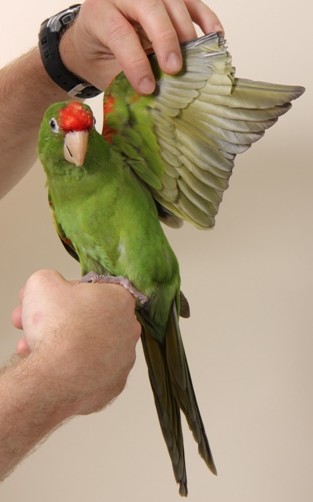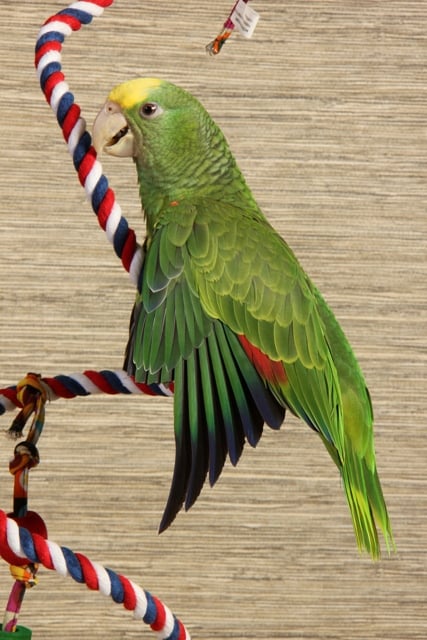Your cart is currently empty!

HARI Official Brand Site

Veterinarians, pet professionals, and pet owners have long realized that the very different lifestyle in captivity can contribute to stress-related disorders such as feather picking and self-mutilation. Obesity and fatty liver syndrome can also be a problem in many pet birds. And surely every pet bird has a right to that most magnificent of gifts – flight. New information has shown that if baby hand-fed parrots are wing-clipped before ever learning to fly, they may never learn to do this complex and beautiful form of exercise. Some do not even attempt to fly when the wings are allowed to grow long again.

Although safety is also a great concern, several key points can help address the safety problems of an indoor parrot. “Managed flight”, not necessarily full powered flight, can be almost as useful to most pet birds. This means that the wing primaries are clipped, but not as short as in traditional wing clips. To begin with (in babies) only an inch or two from the tips of the primaries are trimmed. As soon as flight becomes more powerful, another inch or two are trimmed, and so on. When the bird can maintain level flight with some effort, and descend safely, then the clip is finished. As an added bonus, these longer clipped feathers tend to be moulted more regularly than “quill clips”, or very short trimmed feathers. Many parrots mutilate these very short cut quills. If longer cut feathers seem to be bothering or rubbing the flanks of the bird, a bit of fine sandpaper can blunt the cut surface of the shaft. Sometimes a relatively short clip is recommended for training and socialization reasons, but this should be done after the young bird has learned to fly. And subsequently, the wings should be allowed to grow out again, especially in the winter months when the risk of escape is much lower. Some species, such as Congo greys, should always be given a longer clip because of their tendency to fall and injure their chest when flight capacity is removed.
For safety reasons, the house or flight rooms should be “bird proofed”, with mirrors and windows marked or covered, houseplants removed or protected, and other family pets excluded or supervised during flight times. No cooking or meal preparation should be carried on in kitchens during flight time. Toxic metal or painted objects should be removed. Ceiling fans should be shut off with the switch secured. Doors and windows should be locked or secured with a sign or marker. Taking a pet bird with almost any kind of wing clip outside will still not prevent its loss if a stiff breeze suddenly appears. Instead, construct a roomy outdoor flight or screen a porch for use on fine days, and transport the bird safely to and from the flight in a proper carrier. Supervise time spent in outdoor areas unless the flight can be secured from all hazards.

Assuming that your bird is an adult and already knows how to fly, start by obtaining an assistant, a bath towel, and a good pair of scissors. I like to use the plastic handled bandage shears, as their slightly serrated edge grips the slippery feather shafts quite well. Gently wrap your bird in the towel and hold it by the neck, tummy down. Do not squeeze the chest. Carefully extricate one wing so you are looking down on the top. Check to make sure all feet and toes are safely in the towel. Cut one to two inches from the tip of 6 to 10 of the large primary feathers (amount depends on species). Repeat for the other side. Place the bird carefully on the floor of a “safe” room and keep an eye on the bird for the next hour or two, trying to discover how well the bird can still fly. A second trimming might be necessary until you get the level of flight that you feel is safe for your play area.
Finally, don’t forget to use and promote these exercise sessions each day. Your bird needs and depends on you to take the place of his flock.
Louise Bauck BSc, DVM, MVSc.

Take advantage of our resource hub, which provides a variety of quick links to aid you in your research endeavors.